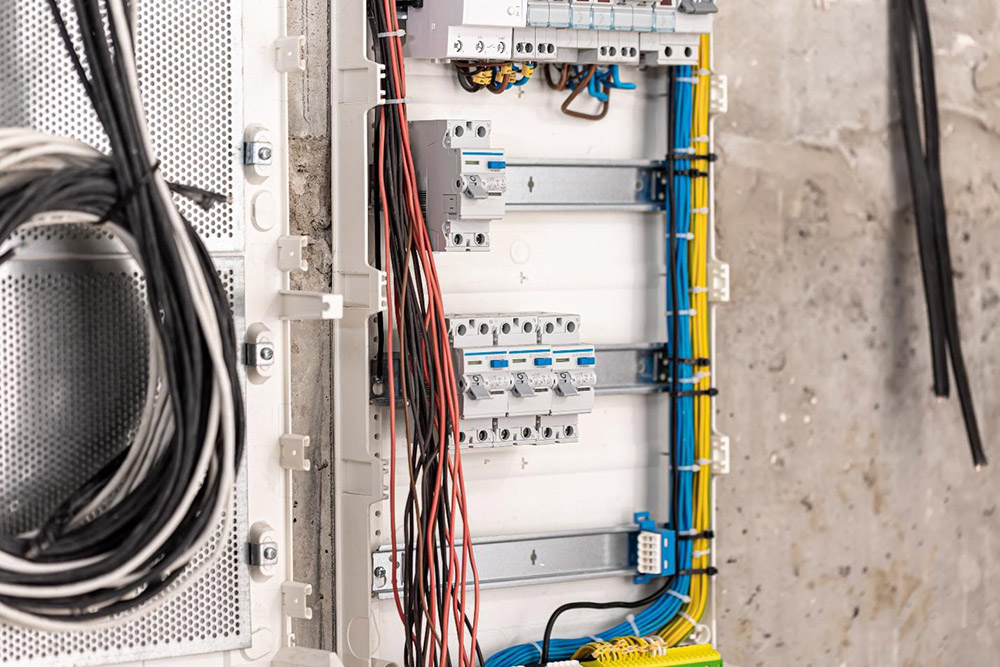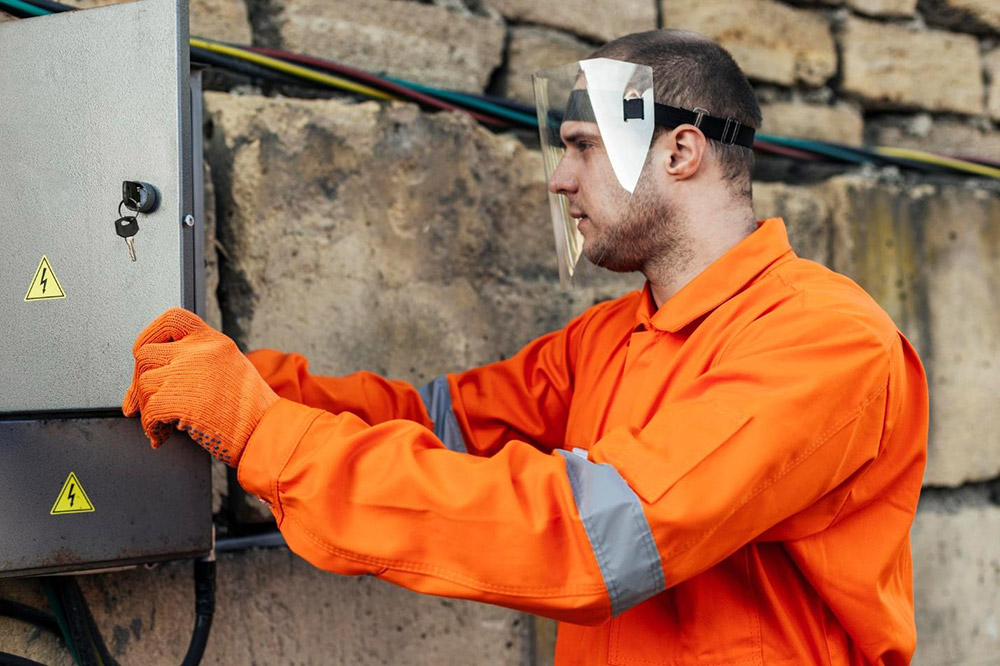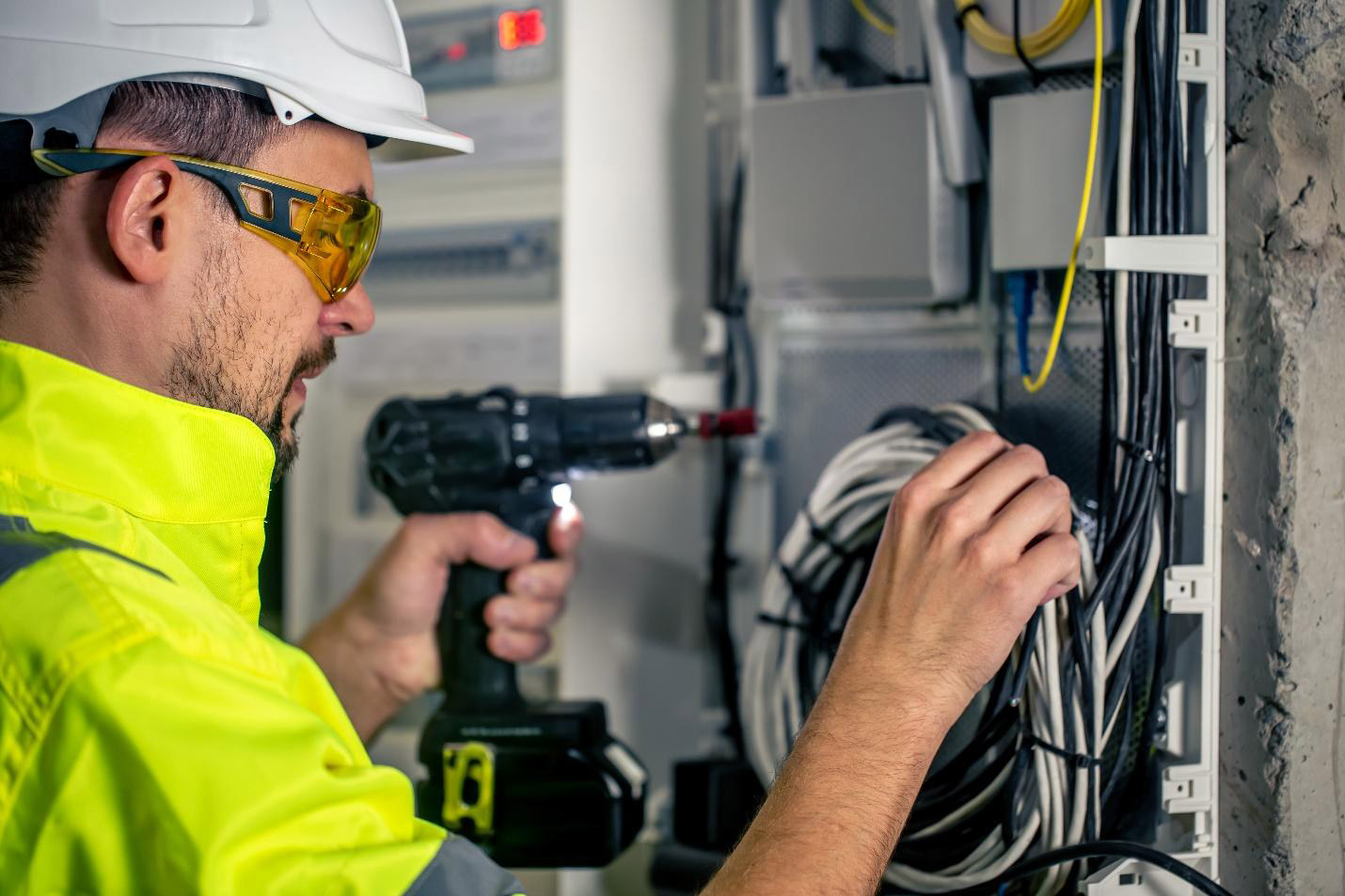Summary
Electrical panel issues can cause power outages, electrical shocks, and fires. Repairing or replacing the electrical panel can resolve these issues. Repairing is ideal for minor problems, while replacement is recommended for major issues, outdated panels, or safety concerns.
Table of Contents
Introduction
The electrical panel is at the heart of this system, distributing power throughout your building and protecting circuits from overloads, lowering the chance of an electrical fire and other hazards.
However, like any complicated electrical component, panels can deteriorate with time, resulting in power outages, fires, and electrical shock. When dealing with electrical panel concerns, organizations frequently ponder whether fixing or replacing them is the best option.
Electrical panel repair and replacement can be challenging. This article examines the factors influencing this decision, exploring the pros and cons of electrical panel replacement vs. repair and providing guidance on which approach can save your office more in the long run.
Understanding Electrical Panel Issues
The electric panel serves as the heart of your building’s electrical system. It distributes power to different circuits and service rooms, increasing productivity. A standard electric panel can last between 25 and 40 years, but like all appliances, it wears out. Recognizing the symptoms of an aged or malfunctioning electrical panel is critical to understanding the problem. Flickering lights, frequent breaker tripping, and strange noises from the panel should not be overlooked.
What Is an Electrical Panel?
An electrical panel is an essential component of any building’s electrical system. It is the primary distribution point for electrical power, linking the external power grid to the numerous circuits and equipment in your building.
The electric panel is essential for smooth business operation and long-term growth. It must be appropriately scaled for your building and operation size. If the panel is too small for your building, it can lead to frequent breaker trips, downtime, and potential fire hazards. And when the breaker panel is too large, it can cause energy wastage.
Common Signs of Electrical Panel Problems
- Overloaded circuits: As your business operation grows and more devices are added to your building, circuits become overloaded, causing breakers to trip frequently.
- Aging panels: The average electrical panel lasts about 25 – 40 years. However, the older they get, the more wear and tear they accumulate, making specific components unsuitable for their purpose. Older panels may not meet current safety standards and pose a fire risk.
- Corrosion and rust: Exposure to water can cause rust or corrosion of electrical panel components, leading to faulty operation and significant danger to employees and property.
- Faulty breakers: Over time, breakers wear out, losing their ability to trip and forestall potential fires and electrical hazards.
- Improper installation: Poor installation processes can lead to various panel issues, including loose connections and inefficient operation, which can cause business downtime and potential safety hazards.
When to Opt for Electrical Panel Repair
Deciding whether to repair your electrical panel is a nuanced decision; here are some situations when a repair is preferred:
1. Loose connections

If the connections between wires and terminals are loose, tightening or replacing them might be sufficient.
2. Faulty circuit breakers
Replacing faulty circuit breakers with new ones can solve common electrical panel issues without requiring a complete replacement.
3. Rust or corrosion
Rust and corrosion can cause operational problems and pose significant safety hazards. Still, instead of replacing the entire panel, you can simply replace or repair the rusty components to restore functionality.
4. Adding new circuits
Overloaded circuits are a common problem for growing businesses; repairing or modifying the existing panel to accommodate new circuits is a more cost-effective solution. It also prevents downtime that might arise from a replacement procedure.
5. Upgrading to Arc-Fault protection
Adding arc-fault protection to existing circuits can enhance safety without requiring a full panel replacement.
6. Cost-Effectiveness of Repairs
When deciding whether to repair or replace your electrical panel, you should pay close attention to the cost-effectiveness of the process. Here are some points to help you evaluate the cost-effectiveness of repairs:
- Age and condition: If your electrical panel is relatively new (less than 10-15 years old) and in good condition, repairs might be more cost-effective.
- Type and severity of issues: Minor issues, such as loose connections or faulty circuit breakers, might be inexpensive to repair.
- Labor and material costs: Hiring a licensed electrician can be expensive, especially if the repair requires specialized skills or equipment. The cost of replacement parts and materials can also vary depending on the type and quality of the components.
- Repair vs. replacement cost: Compare the cost of repairs to replacing the electrical panel. Replacing the panel might be more cost-effective if the repairs exceed 50-75% of the replacement cost.
- Short-term vs. long-term costs: Consider the short-term costs of repairs versus the long-term cost of replacement. When repairs provide short-term or temporary fixes, choosing a longer-term and more reliable solution is better.
When to Consider Electrical Panel Replacement
You know that a replacement is necessary when these situations arise:
1. Safety concerns

If your panel shows any standard safety hazards, it indicates it is time for a replacement. Some signs you should concern yourself with include:
- Frequent overheating
- Electrical shocks
- Arcing or sparking
2. Age and obsolescence
As your electrical panel ages, it accumulates wear and tear, compromising the effectiveness and reliability of its components. Some of the signs to look for include:
- Panels older than 20-30 years
- Outdated technology
- Incompatible with new appliances
3. Capacity and expansion issues
If your electrical panel can’t provide enough power for your business, it may need an upgrade or replacement. Some signs that point to capacity and expansion issues are:
- Overloaded circuits
- Adding new circuits
- Insufficient power
4. Maintenance and repair issues
If you frequently repair or replace components within your electrical panel, it is a sign that your panel is nearing the end of its usage, and you may need to consider replacement. Other maintenance and repair issues that might compromise safety and reliability and necessitate upgrades:
- Rust or corrosion
- Costly repairs
5. Compliance and code issues
If your electrical panel does not meet current codes or standards, it may need to be replaced. You should also pay attention to regulatory requirements for your business and buildings.
Benefits of Replacement
- Enhanced safety: New panels meet current safety standards and reduce the risks of electrical fires and other hazards.
- Increased capacity: Replacement allows you to upgrade your panel to one with a higher capacity, accommodating more circuits and meeting modern electrical demands.
- Long-term solution: New panels can provide reliable service for many years, reducing the need for frequent repairs.
- Compliance: New panels ensure your electrical system complies with regulatory requirements and safety codes.
Cost Comparison: Repair vs. Replacement
1. Initial Costs
Major electrical panel repairs can cost between $2,000 and $5,000, not including hiring a licensed electrician and using specialized equipment. The initial cost of replacing and installing an upgraded panel varies between $6,000 and $10,000, depending on the panel size, labor, additional work, etc.
2. Long-Term Savings
Both procedures offer the potential for long-term savings. Repairs allow you to save on replacement while enjoying an improved capacity and efficiency. Regular maintenance can keep your panel in peak working condition for a manageable cost.
Meanwhile, panel replacement allows you to enjoy higher capacity and a more reliable electrical system while eliminating the need for frequent repairs.
Choosing the Right Option for Your Office
- Assess your office’s electrical needs. Remember to consider current electrical demand, future expansion plans, and energy efficiency goals.
- Evaluate the condition of your electrical panel. Pay close attention to its maintenance and repair history, safety concerns, and age and condition.
- Consider your budget and timeline. Identify priorities, such as minimizing downtime, reducing energy costs, and improving safety.
- Weigh the pros and cons of repair vs. replacement.
- Consult with a licensed electrician.
Conclusion
Electrical panel repair is a more cost-effective option for newer panels (10-15 years old). However, as your panel ages, it will require more repairs to ensure a safe and reliable operation. This is when you should consider replacing it. When deciding on the best option for your business, there are some nuanced situations that you cannot evaluate. For this reason, you need expert advice from experienced commercial electricians. Tercero Inc. is a licensed and experienced commercial electrician. Book a free consultation today.
Frequently Asked Questions (FAQs)
Repairing your electrical panel might be viable if minor problems include loose connections and fault breakers. However, more extensive repairs are more expensive.
The average electrical panel has a lifespan of 25-40 years.
Repairing electrical panels might be less expensive, but it is not a long-term solution.
Electrical panels should be replaced every 25 -40 years to keep up with modern electrical demands and current safety and regulatory requirements.
Old electrical panels are unsuitable for modern electrical demands and pose significant safety hazards.

